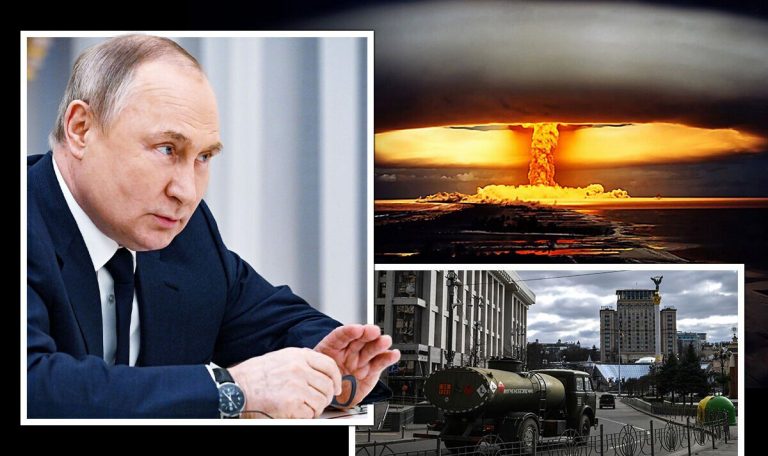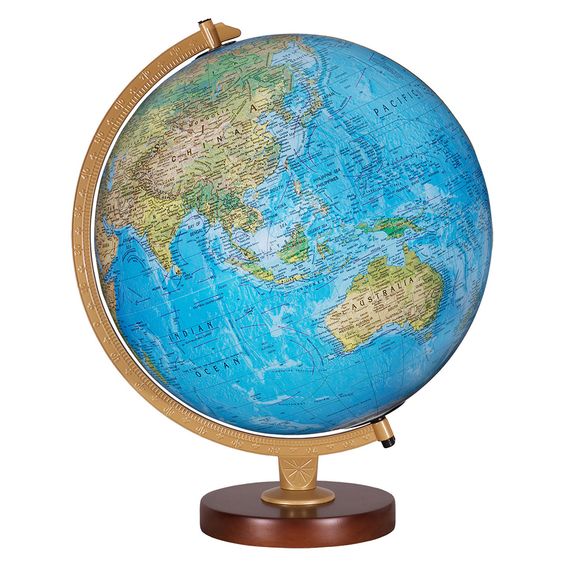
The Russian President has been rattling his nuclear sabers since before his February invasion of Ukraine. He hopes that rattling alone will be enough to bring the West to heel.
By Tom Arms
The problem with great power is that using it is too often an abuse of power and if you abuse it, you lose it.
This is especially true of nuclear power as Vladimir Putin may soon discover.
The Russian President has been rattling his nuclear sabers since before his February invasion of Ukraine. He hopes that rattling alone will be enough to bring the West to heel.
This appears to be another of his miscalculations, leaving him with two unpalatable choices: put up or shut up.
If he decides to put up (i.e. use nuclear weapons) then there are a number of options available to him. To start with he will probably start at the bottom of the nuclear leader, that is with tactical or battlefield nuclear weapons. He has a wide range of such weapons to choose from.
The explosive yield of Russia’s tactical nukes ranges from 10 times that of the Hiroshima atomic bomb to less than 0.3 percent of the 1945 explosion. They can be delivered by missile, artillery, landmines, drones, bombers, mortars, even recoilless smooth-bore rifles.
There are different types of explosions. There is the air burst which was used over Hiroshima and Nagasaki. This bomb explodes in the air above the target. The force of the explosion destroys people and property on the ground but the effects of radiation are minimized.
A ground burst maximizes radiation damage because it irradiates the ground which it hits and throws thousands of tons of dirt and rubble into the atmosphere where air currents can move it hundreds of miles from the bomb site.
A neutron bomb, also known as the capitalist bomb, explodes in the air and kills people within its range but leaves property intact.
Russia has about 2,000 tactical nuclear weapons. NATO used to have a massive Cold War superiority of tens of thousands but now only has about 100.
The reason for its former superiority is that NATO relied on tactical nuclear weapons to slow down a Soviet attack in order to give time for American troops to be rushed across the Atlantic.
Then the Cold War ended and there was a concern that the weapons might fall into the hands of terrorists so NATO tactical nuclear weapons were dismantled. The Russians returned their tactical weapons to storage depots but did not dismantle them.
There was never an attempt to negotiate limits on tactical nuclear weapons. There were successful talks to limit strategic and intermediate range nuclear missiles and even conventional forces, but battlefield nukes never reached the negotiating table.
This is partly because NATO doctrine contemplated using them only if they were losing a conventional war and partly because their size (some are as small as a hand grenade) made verification almost impossible.
So why would Putin use battlefield nukes? He would use them if he believes that there is an existential threat to the Russian state. That red line may already have been crossed in the paranoid mind of the Russian leader, but it is impossible to know for certain.
Another reason for using tactical nukes would be if Russia runs out of conventional missiles and artillery. According to British intelligence, this is already happening. The latest bombardment of Ukrainian cities involves a large number of Russian surface to air missiles aimed at ground targets, a sure sign that they are running short of the more accurate ground to ground and air to ground ordnance.
NATO knows where the Russian tactical nuclear weapons are. Its satellites are keeping a close eye on the storage facilities and the good news is that so far they are staying put.
If they come out and are used the belief is that Putin will take one of two courses of action: destroy a military target with a relatively small weapon or a “shock and awe” explosion in the middle of the Black or Baltic Sea. Either would be meant to demonstrate his willingness to use the Russian nuclear arsenal in the hope that this would be enough collapse NATO resolve.
There is no sign that that would work. This week Germany and Britain upped the stakes by sending their most advanced anti-aircraft missile systems to Ukraine. NATO Defence ministers met to discuss stepping up armaments production. The G7 pledged to do “whatever it takes” to defeat the Russian invasion of Ukraine and 147 countries voted in the UN General Assembly to condemn Putin’s annexation of eastern Ukraine.
Exactly what President Joe Biden would do if Putin flexed his nuclear muscles is unclear—perhaps intentionally so. He recently told a fund raising dinner that the world has not been so close to Armageddon since the Cuban Missile Crisis. But a few days later he told CNN that he did not think Putin would use tactical nuclear weapons. Meanwhile, Secretary of State, Antony Blinken, reported that Russian diplomats have been informed that if Moscow uses nuclear weapons the “consequences would be horrific.”
The American response is unlikely to be nuclear. For a start Washington would not want to escalate the conflict, and it does not have enough tactical weapons to respond in kind. It does, however, enjoy massive superiority in conventional weapons. So the most likely NATO response would be dropping restrictions on arming the Ukrainian military and support for attacks on nuclear storage facilities in Russia.
Of perhaps greater significance would be the reaction of China and India who have been helping to fund Putin’s war by buying Russian oil and gas. They would find it very difficult to continue to support Moscow. Putin would become an isolated pariah. He will have lost the political power that his nuclear arsenal gave him.
 World Review
World Review
- Vladimir Putin’s hold on power must be slipping away. But which Kremlin insider might replace him. Well, according to the constitution, the Prime minister—who is Mikhail Mishustin—is meant to succeed the president if he has to suddenly resign or is incapacitated. Mishustin has been responsible for the dealing with the economy which is reeling from sanctions. He has done a reasonable job and is in the front rank of successors, but not regarded as a number one possibility. That could be Nikolai Patrushev, former head of Russian intelligence organization the FSB. He is known to be a hardline ultranationalist. Another hardliner is Chechen strongman Ramzan Kadyrov who has been publicly urging the Russian president to use tactical nuclear weapons. Also in the running is Mikhail Mizintsev, another hardliner who is known as the “butcher of Mariupol” and has recently been brought back from the front to be Deputy Minister of Defense. Dmitry Medvedev kept the presidential chair warm for four years from 2008 while Putin sorted out the constitution. He is another possible and recently warned that Putin “is not bluffing” about nuclear weapons. There are several more potential usurpers in the Kremlin wings. At the moment they all have one thing in common—they are ultra-nationalist right-wingers committed to the war in Ukraine.
- Public protests involving banners, smoke and loud hailers are rare in China. They are virtually unheard of on the eve of a Chinese Communist Party Congress. The reason is that they can be life-threatening for the protesters. But that did not stop two brave souls from unfurling banners from an overpass. One read: “Let us strike from schools and from work and remove the dictator Xi Jinping.” The other focused on Xi’s unpopular Zero Covid strategy and said: “No restrictions. We want freedom. No Lies. We want dignity.” The protesters were quickly surrounded by police and carted off, but videos quickly made it onto social media. China’s censors meant they were just as quickly erased from the local internet, but not before they could be reposted for the rest of the world to see. The protests are a huge embarrassment for Xi who is expected to be confirmed as president for a third term by the 2,500 delegates gathering in Beijing on Sunday. The fact that the men were willing to risk—quite possibly sacrifice—their lives for their protest indicates the depth of opposition to Xi Jinping.
- It is beginning to look as if ex-president Donald Trump may indeed spend some time behind bars. The congressional committee investigating the 6 January Capitol Hill Riots have voted unanimously to subpoena Trump to testify before the committee. He has indicated that he will refuse to participate in what he calls a “witch hunt” and “political farce”. If he sticks to that position then he can be charged with contempt of Congress which, if he is found guilty, carries a two year prison sentence. This does not meant, however, that Trump would be prevented from running for president in 2024. There is nothing in the US constitution that bars a convicted felon from standing for the presidency. In fact, there is a legal precedent that allows it. In 1920 Socialist Eugene Debs campaigned from a prison cell. He had been sentenced to ten years behind bars under the terms of the Sedition Act after he campaigned against US participation in the First World War. Debs garnered only 3.4 percent of the vote. A martyred Trump would do much better.
- Iran’s hijab protests are not stopping. In fact they are gathering steam and spreading. There are reports Kurdish ethnic communities in Northwest Iran are now rioting and that oil workers are striking in oil terminals at Abadan. Meanwhile the women are continuing to lead protests in cities across Iran. They are being arrested and some are dying. These are not the first riots against the Mullahs. In 2009, millions took to the streets to protest the results of the presidential elections. Then in 2017 and 2019 economic hardships triggered another round of riots. But in those instances the protests petered out after a week or two. The current violence has been going on for a month and is growing. Iranian sociologist Hosein Ghazian, said “the rioters see no prospect for a better future and that gives them courage.”
It can only get worse. That was the gloomy assessment of the International Monetary Fund in its World Economic Outlook published this week. World growth is forecast to be 2.7percent this year, down from 2.9 percent. There are three reasons: high US interest rates; food and energy shortages caused by the Ukraine war and China’s zero Covid strategy. The US economy is expected grow by 1.6 percent this year and just one percent in 2023. The EU will grow by 0.5 per cent in 2022. Both the German and Italian economies are forecast to contract. Meanwhile, Britain’s ship of state appears to remain rudderless. Prime Minister Liz Truss attempted to steady the markets and the pound by sacking Chancellor of the Exchequer Kwasi Kwarteng and cancelling a proposed cut in corporation tax. But before she had finished her eight minute press conference to announce the U-turn, the pound had fallen another 1.2 percent against the dollar.
_________________
 Tom Arms is foreign editor of Liberal Democrat Voice and is currently working on a new edition of “The Encyclopedia of the Cold War”. He is also author of the recently published book “America Made in Britain.”
Tom Arms is foreign editor of Liberal Democrat Voice and is currently working on a new edition of “The Encyclopedia of the Cold War”. He is also author of the recently published book “America Made in Britain.”